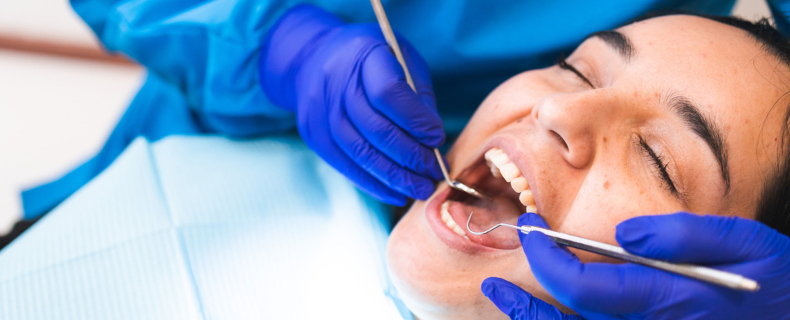Okemos, Lansing, East Lansing MI
If for no other reason than television advertising, nearly everyone knows that dental cavities are bad for the teeth. But what are dental cavities? How and why do they occur, and what can be done about them?
What are dental cavities?
Healthy teeth are naturally smooth to the touch and covered by a hard, white outer shell called enamel. Enamel has pores, but these are microscopic. Larger pits and even holes in this enamel are known as cavities.
What causes cavities?
The root cause of cavities is bacteria, of which the human mouth contains many strains (this occurs naturally in every mouth). One type is Streptococcus mutans, which is nourished by saccharides (the chemical term for sugars). These saccharides are not only found in sugar (specifically, a saccharide known as sucrose) but in many other foods and beverages, including dairy products (lactose), breads and starches (glucose), and fruits and fruit juices (fructose). Digestion of these by S. mutans results in lactic acid, which causes a process to occur in dental enamel called demineralization. As its name implies, through demineralization the enamel loses minerals and begins to break down. Fortunately, ions found in saliva reverse this (remineralization), and fluoridated water helps. However, if there is too much acid, demineralization occurs faster than remineralization. This can lead to cavities.
Are cavities actually bad for the teeth?
In short, cavities are very bad for the health of the tooth. Cavities expose the dentin (the interior tissue of the tooth) to the acid, causing it to deteriorate. This can expose the nerve and can cause severe discomfort. Worse, it can ultimately injure the root of the tooth (and possibly damage the jaw).
For these reasons, dentists are trained to spot and treat cavities. How do dentists detect these?
Symptoms
As with all medical professionals, the dentist may suspect something is amiss – in this case, with teeth – based on if the patient describes anything out of the ordinary, and whether these circumstances are symptoms of cavities.
Typical warning signs include:
- Persistent bad breath, even when not eating strong-smelling foods
- Sensitivity, especially to hot or cold and to sweet food and drink
- Food or floss always getting stuck in the same spot
- Pain when chewing or biting down
- Bleeding, swelling, or tenderness in the gums
- A brown or black spot that is visible and does not go away after brushing
Closer look
Whether or not cavities are suspected, a dentist will want to take a closer look: while sometimes cavities may have gotten to the point where they are easily seen, sometimes cavities may be “hiding” in parts of teeth that are difficult to see. The dentist will usually also use a probe and mirror to inspect such places. Healthy enamel, of course, is smooth and hard, so if a probe sticks into the tooth, it is a sure sign of a cavity.
Some dentists also use a device called an Intraoral Camera. Roughly the size of a pen, this is inserted into the mouth and slowly moved, taking images that show up on a computer screen. This allows the dentist to see if there are cavities.
Dental X-rays
In addition to a visual, manual, and occasional camera-aided inspection, dentists typically take X-rays of the teeth. These allow dentists to detect cavities between teeth and other places where a probe or camera will not fit. The X-ray will show how deep any cavity may be and how much damage there is to the teeth.
Laser Detection
All these techniques are very useful, but they have limitations. For example, a cavity may be too small to be detected by these means but is still causing harm to the enamel. Moreover, fillings are depicted as opaque in the X-ray, and this can obscure cavities behind them. Finally, teeth that are not perfectly straight may overlap, making the X-ray difficult to read.
However, some other apparatuses are available to some dentists. For example, “Laser detection” uses a wand-like device to send certain wavelengths of light into the mouth. Undamaged tooth enamel will allow the light to pass through (which does not affect the underlying tissue). However, decay will cause the light to reflect, allowing the precise location, size, and depth of a cavity to be discovered.
Next steps
Dentists may use some or all of these techniques to find out whether cavities are present. And if they are, the dentist will recommend treatment options to seal up the cavity and make sure it does not cause any further damage to the teeth.
Anyone who suspects that they might have cavities would be well-served to schedule an appointment with a dentist, who will provide the best course of action as to what to do next.


